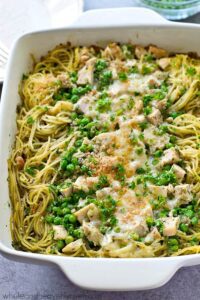Brown Sugar Garlic Chicken is a delicious recipe that combines amazing flavors and textures.
In the realm of quick yet impressive dinners, Brown Sugar Garlic Chicken stands out as a perfect weeknight meal that tastes anything but ordinary. This dish masterfully balances sweet and savory flavors, creating a symphony in your mouth with each bite. The caramelized brown sugar forms a glossy glaze that clings to tender chicken, while the garlic provides aromatic depth that makes the entire house smell incredible as it cooks.
The genius of this recipe lies in its simplicity and speed. With just a handful of pantry staples, you can create a restaurant-quality meal in under 30 minutes. The sauce reduces to a sticky, shiny glaze that beautifully coats the chicken, while the subtle heat from red pepper flakes provides just enough kick to keep things interesting. Served over fluffy rice to soak up every drop of the delicious sauce, this dish satisfies on every level.
The Science of Flavor Balancing
Brown Sugar Garlic Chicken exemplifies the culinary principle of umami-sweet balance. The soy sauce provides glutamate compounds that create savory umami flavor, while brown sugar contributes sweetness from molasses and sucrose. These two taste profiles enhance each other, creating a more complex flavor experience than either could achieve alone.
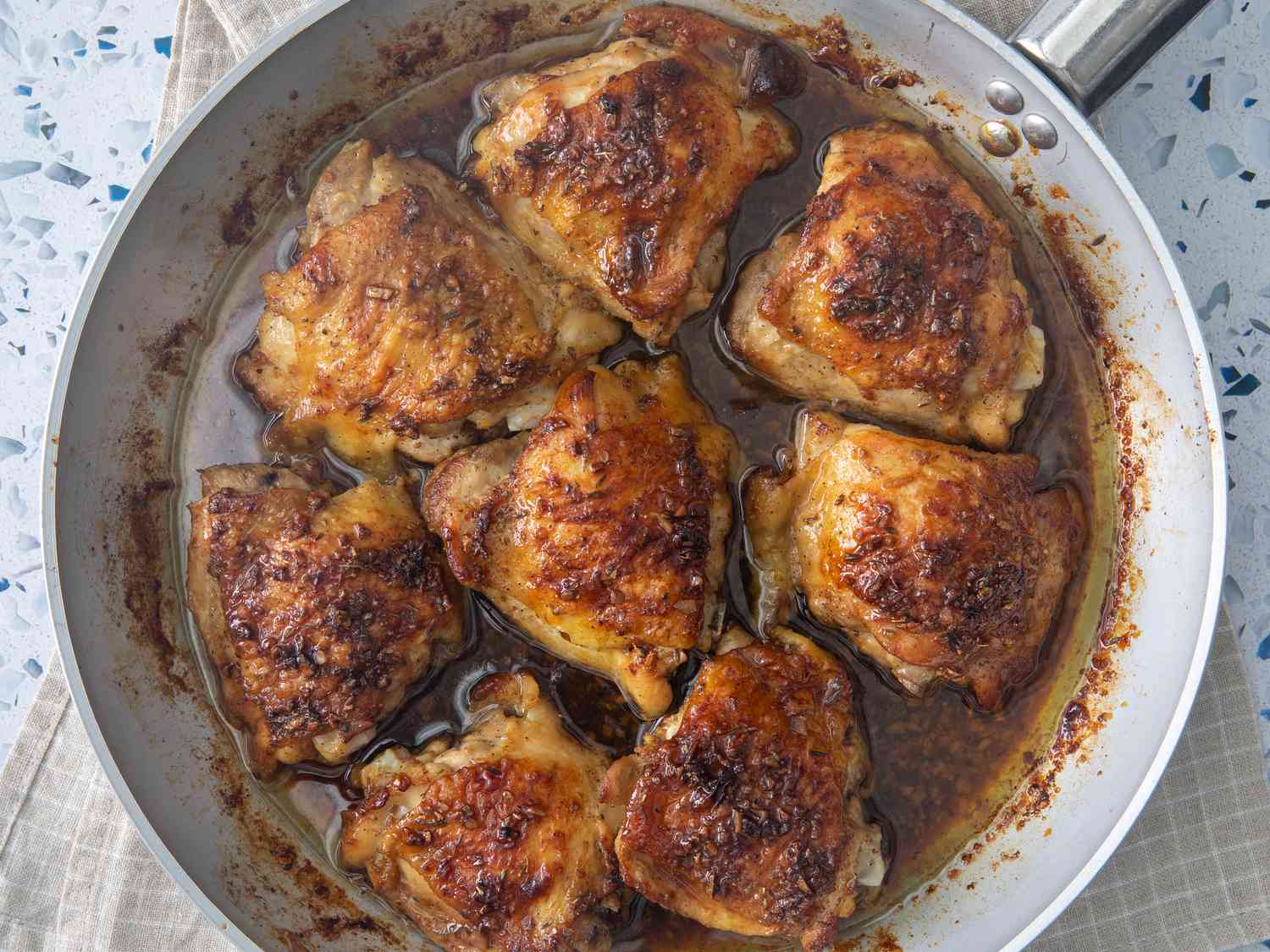
The Maillard reaction occurs when the chicken browns in the hot pan, creating hundreds of new flavor compounds through the reaction between amino acids and reducing sugars. Meanwhile, the caramelization of the brown sugar in the sauce creates additional flavor complexity through pyrolysis, breaking down sugar molecules into increasingly complex compounds that provide notes of butterscotch, caramel, and toffee.
Garlic contributes allicin and other sulfur compounds that provide its characteristic aroma and flavor. These compounds transform during cooking, becoming less pungent and more sweet and nutty, which complements the brown sugar perfectly.
Ingredient Selection Guide
Chicken: Boneless, skinless chicken breasts work well, but thighs offer more flavor and remain juicier. If using breasts, pound to even thickness for consistent cooking. For extra flavor, use chicken with skin and crisp it before making sauce.
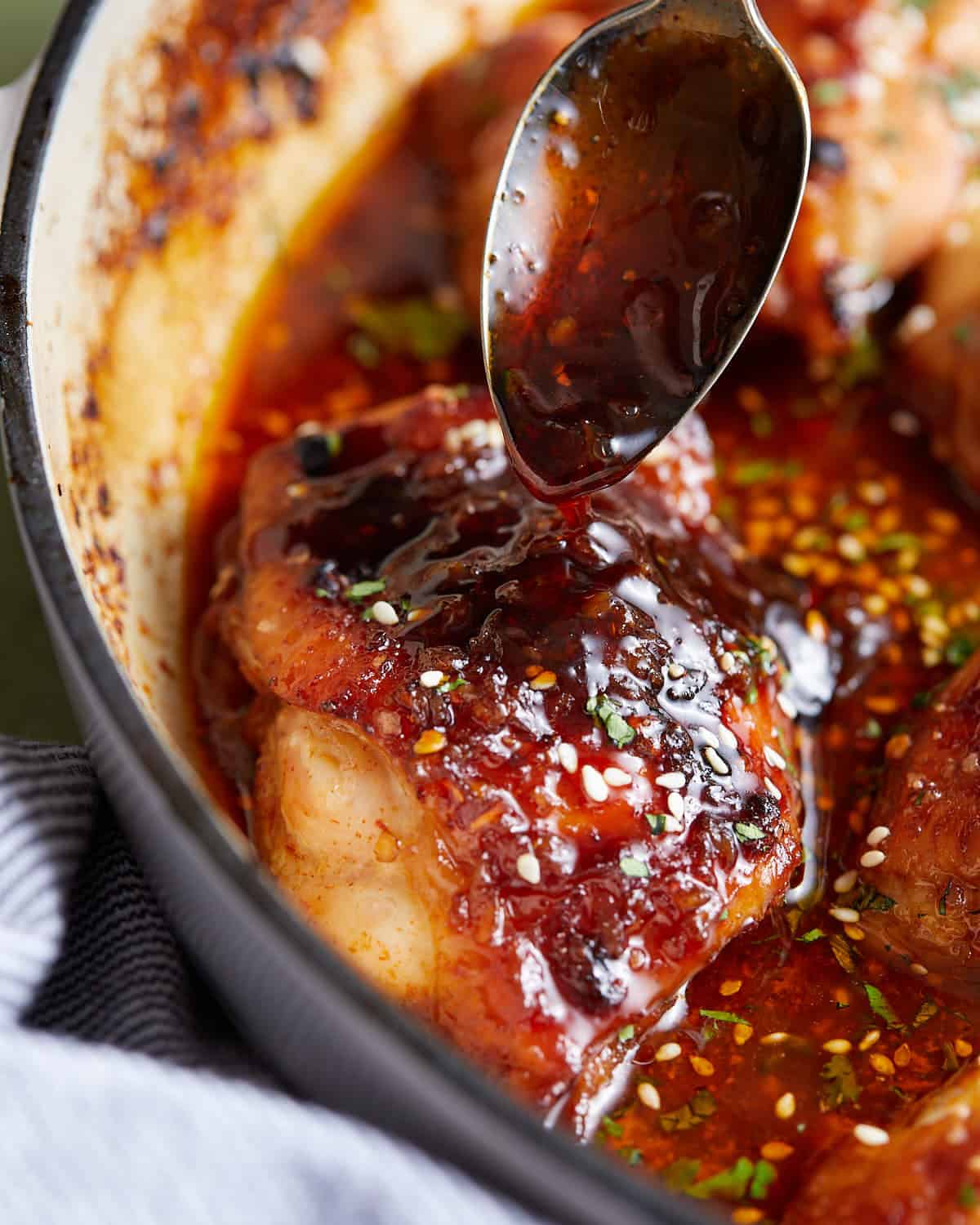
Brown sugar: Dark brown sugar contains more molasses, providing deeper flavor. Light brown sugar works well too. For healthier version, coconut sugar can be substituted but will change flavor profile.
Soy sauce: Regular soy sauce provides saltiness and umami. For gluten-free, use tamari or coconut aminos. Reduced-sodium versions allow better control over saltiness.
Garlic: Fresh garlic provides the best flavor. minced finely for even distribution. pre-minced jarred garlic can be used in pinch but has slightly different flavor profile.
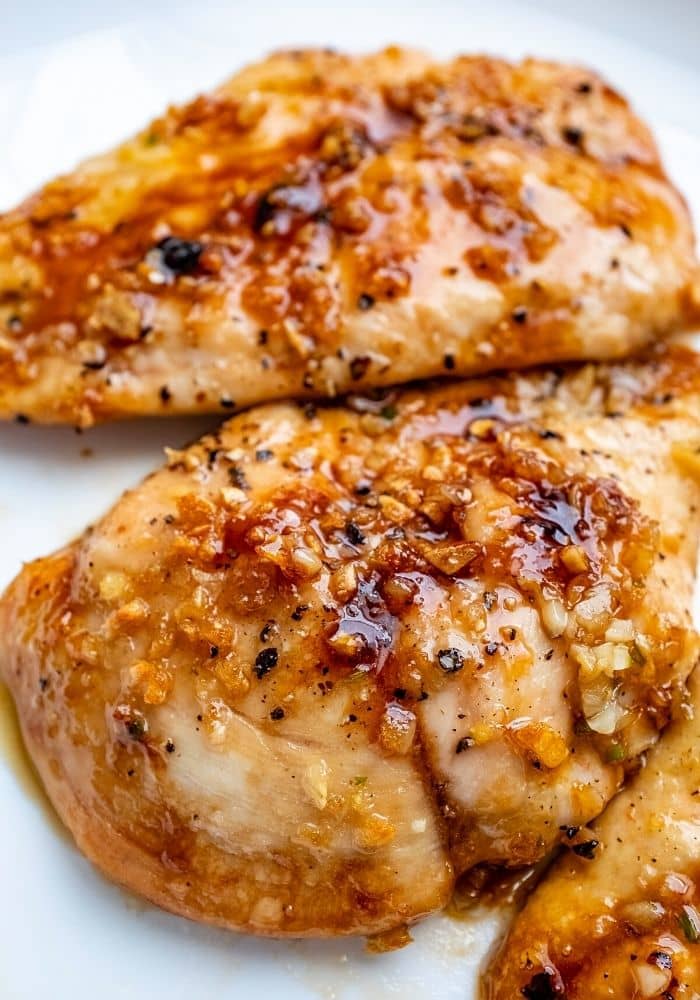
Additional flavors: Fresh ginger adds brightness. Rice vinegar provides acidity to balance sweetness. Sesame oil contributes nutty aroma. Red pepper flakes add customizable heat.
Technique Mastery
Chicken preparation: Pound chicken to even thickness to ensure uniform cooking. Pat dry before seasoning to promote browning. Dusting with cornstarch helps create slight crust and helps sauce adhere.
Browning: Heat pan properly before adding chicken. Don’t overcrowd pan – cook in batches if necessary. Allow chicken to develop golden crust before flipping – this fond (browned bits) adds flavor to sauce.

Sauce development: Cook garlic briefly to release flavor without burning. Deglaze pan with sauce ingredients, scraping up browned bits. Simmer until sauce reduces and thickens to glaze consistency.
Finishing: Return chicken to pan and spoon sauce over to coat. Simmer briefly to allow flavors to meld and ensure chicken is cooked through. Garnish just before serving for freshness and color contrast.
Flavor Variations
This versatile recipe adapts well to various flavor profiles:
Asian-inspired: Add 1 tablespoon hoisin sauce or oyster sauce for additional umami depth.
Spicy version: Increase red pepper flakes or add sriracha or chili garlic paste.
Citrus twist: Add zest and juice of orange or lime for brightness.
Herbaceous: Stir in fresh cilantro or Thai basil at the end.
Pineapple addition: Add chunks of fresh pineapple with the sauce for sweet-tart contrast.
Meal Prep Strategies
This dish is excellent for meal prepping:
Make ahead: Cook chicken and sauce separately, combine when reheating to prevent sogginess.
Freezing: Freeze cooked chicken with sauce for up to 3 months. Thaw in refrigerator before reheating.
Component prep: Mix sauce ingredients in jar for quick weeknight cooking. Chop garlic and ginger in advance.
Portioning: Divide into containers with rice and vegetables for complete meals.
Reheating: Reheat gently in skillet or microwave, adding splash of water if sauce has thickened too much.
Dietary Adaptations
This recipe adapts well to various dietary needs:
Gluten-free: Use tamari or coconut aminos instead of soy sauce.
Lower sugar: Reduce brown sugar by half and add teaspoon of honey for sweetness without overwhelming.
Paleo: Use coconut aminos and coconut sugar instead of soy sauce and brown sugar.
Whole30: Omit sugar and use compliant coconut aminos. Add date paste for slight sweetness if desired.
Vegetarian: Use firm tofu or tempeh instead of chicken. Press well and cornstarch-dust for similar texture.
Serving Suggestions
Complete your meal with these serving ideas:
Rice: Steamed jasmine or basmati rice absorbs sauce beautifully. For healthier option, use brown rice or quinoa.
Vegetables: Steam broccoli, snap peas, or bok choy as side. Or stir-fry vegetables and serve underneath chicken.
Noodles: Serve over rice noodles or soba noodles for variation.
Salad: Asian slaw or cucumber salad provides refreshing contrast to rich chicken.
Garnishes: Fresh herbs, additional sesame seeds, or lime wedges enhance presentation and flavor.
Cultural Context
While not authentic to any particular Asian cuisine, Brown Sugar Garlic Chicken represents the Western interpretation of Asian flavors that has become popular in fusion cooking. It draws inspiration from various traditions: the use of soy sauce from Chinese cuisine, the balance of sweet-salty from Thai cooking, and the quick stir-fry technique common across East Asian culinary traditions.
This type of fusion cooking reflects our globalized food culture, where ingredients and techniques from different traditions are combined to create new dishes that suit contemporary tastes and lifestyles. The accessibility of ingredients like soy sauce and sesame oil in mainstream supermarkets has made such recipes part of the home cooking repertoire across cultures.
Final Thoughts
Brown Sugar Garlic Chicken exemplifies how a few quality ingredients, combined with proper technique, can create something greater than the sum of its parts. The dish represents the ideal weeknight meal: quick enough for busy evenings yet special enough for company, familiar enough to please picky eaters yet interesting enough to feel like a treat.
As you master this recipe, you’ll develop fundamental cooking skills that apply to many other dishes: proper protein cooking, sauce making, and flavor balancing. These skills will serve you well beyond this single recipe, making you a more confident and capable cook.
Whether you’re cooking for yourself, your family, or guests, this dish delivers satisfaction, flavor, and convenience in equal measure. It’s the kind of recipe that becomes a regular in your rotation because it simply works – delivering delicious results every time with minimal effort.
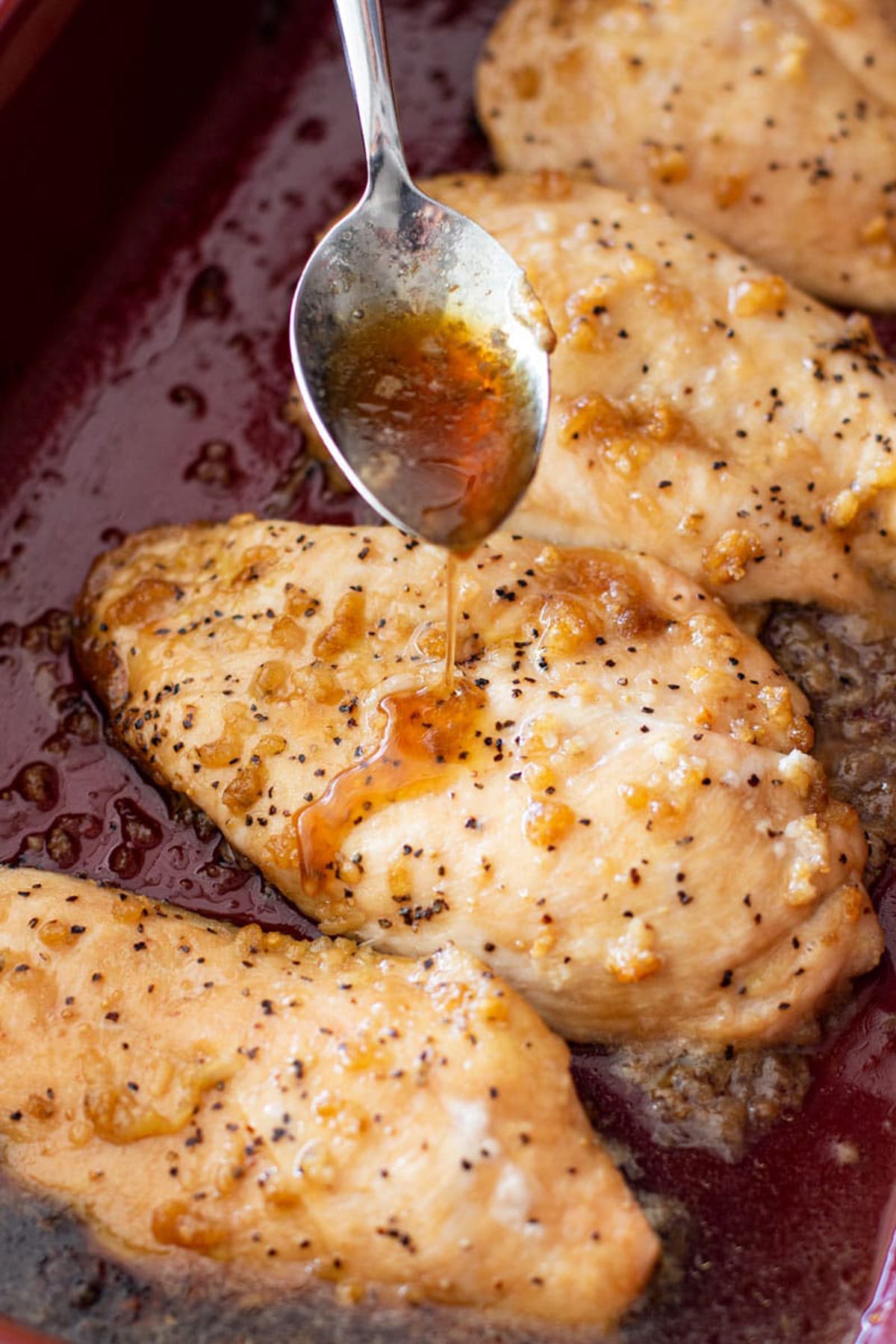
Brown Sugar Garlic Chicken
Ingredients
Method
- Pound chicken breasts to even thickness
- Season with salt, pepper, and dust with cornstarch
- Heat oil in large skillet over medium-high heat
- Add chicken to skillet and cook until golden (5-6 minutes per side)
- Remove chicken and set aside
- Reduce heat to medium
- In same skillet, add garlic and cook until fragrant (30 seconds)
- Add brown sugar, soy sauce, vinegar, sesame oil, ginger, and pepper flakes
- Simmer until slightly thickened (2-3 minutes)
- Return chicken to skillet, coat with sauce
- Simmer until chicken is cooked through and sauce clings to chicken
- Garnish with sesame seeds and green onions
- Serve over steamed rice

